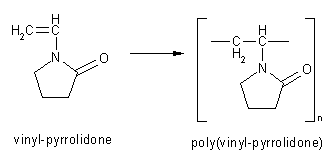METHODOFPREPARATION
1. Calculate the required quantity of each ingredient for the total amount to be prepared.
2. Accurately weigh and/or measure each ingredient and obtain the required number of tiagabine tablets.
3. Thoroughly pulverize the tablets in a mortar and reduce the particle size using a pestle.
4. Add the glycerin and mix to a smooth, uniform paste.
5. Add the Ora-Plus and mix well.
6. Add sufficient Ora-Sweet or Ora-Sweet SF to volume and mix well.
7. Package and label.
PACKAGING
Package in tight, light-resistant containers.1
LABELING
Keep out of reach of children. Use only as directed. Shake well before using. Store in a refrigerator.
STABILITY
A beyond-use date of 14 days can be used for this preparation when stored in a refrigerator.1
USE
Tiagabine hydrochloride oral liquid is used as an anticonvulsant in patients that cannot take an oral solid tiagabine dosage form.
QUALITYCONTROL
Quality-control assessment can include weight/volume, pH, specific gravity, active-drug assay, color, rheological properties/pourability, physical observation and physical stability (discoloration, foreign materials, gas formation and mold growth).2
DISCUSSION
Tiagabine hydrochloride (C^sub 20^H^sub 25^NO^sub 2^S^sub 2^.HCl, MW 412.02, Gabitril) is a nipecotic acid derivative used as an anticonvulsant. It differs structurally from other currently available anticonvulsant agents. It occurs as a white-to-off-white powder that is sparingly soluble in water. Tiagabine hydrochloride is administered orally; food will delay but not decrease the extent of tiagabine absorption. (The manufacturer of the commercial tablets states that tiagabine should be taken with food.) It is commercially available as 2-mg, 4-mg, 12-mg, 16-mg and 20-mg film-coated tablets. The tablets also contain ascorbic acid, colloidal silicon dioxide, crospovidone, hydrogenated vegetable oil wax, hydroxypropyl cellulose, hydroxypropyl methylcellulose, lactose, magnesium stearate, microcrystalline cellulose, pregelatinized starch, stearic acid and titanium dioxide, along with a FD&C or D&C dye, depending upon the tablet strength.1'3
Glycerin (C^sub s^H^sub g^C^sub 6^, MW 92.1, glycerol, 1,2,3-propane triol) occurs as a clear, colorless, odorless, viscous, hygroscopic liquid with a flavor that is about two thirds as sweet as that of sucrose. It has a specific gravity of about 1.25 and a melting point of 1 7.8°C; if cooled to crystallization, it will need to be heated to about 20°C to melt. It is miscible with water, methanol and 95% ethanol; practically insoluble in oils and chloroform and slightly soluble in acetone. It should be stored in airtight containers in a cool place.4
Ora-Plus is an oral suspending vehicle that accepts dilution of up to 50% or more with water, flavoring agents or syrups and still retains its suspending properties. It has a pH of approximately 4.2 and an osmolality of about 230 mOsm/Kg. It is a thixotropic vehicle with a viscosity of approximately 1000 cps at 25°C. It contains purified water, microcrystalline cellulose, sodium carboxymethylcellulose, xanthan gum, carrageenan, sodium phosphate and citric acid as buffering agents; simethicone as an antifoaming agent; and potassium sorbate and methylparaben as preservatives.5
Ora-Sweet syrup is a flavoring vehicle for oral extemporaneous preparations. It is flavored with a citrus-berry flavor blend and contains glycerin and sorbitol to prevent "cap-lock," a problem associated with many syrups. It is buffered to a pH of approximately 4.2 and has an osmolality of about 3240 mOsm/Kg. It contains purified water, sucrose, glycerin, sorbitol (5%), flavoring, sodium phosphate and citric acid as buffering agents; and potassium sorbate and methylparaben as preservatives.5
Ora-Sweet SF is a flavoring vehicle for oral extemporaneous preparations. It is a sugar-free, alcohol-free syrup flavored with a citrus-berry flavor blend. It is buffered to a pH of approximately 4.2 and may be used alone or in combination with other vehicles. It will tolerate dilution up to 50% with dissolved actives in water or suspending agents and still retain an acceptable taste. It has an osmolality of 2150 mOsm/Kg. It contains water, sodium saccharin, xanthan gum, glycerin, sorbitol, citric acid and sodium citrate as buffers; methylparaben, propylparaben and potassium sorbate as preservatives; and flavoring agents.5
REFERENCES
1. US Pharmacopeial Convention, Inc. United States Pharmacopeia 26NationalFormulary21. Rockville, MD:US Pharmacopeial Convention, lnc.;2003:1832-1833, 2197-2201, 2584.
2. McEvoy GK. AHFS Drug Information-2003. Bethesda, MD:American Society of Health-System Pharmacists;2003:2142-2144.
3. [No author listed.] Physicians' Desk Reference. 57th ed. Montvale, NJ:ThomsonPDR;2003:1188-1193.
4. Price JC. Glycerin. In: Rowe RC, Sheskey PJ, Weller PJ, eds. Handbook of Pharmaceutical Excipients. 4th ed. Washington, DC:American Pharmaceutical Association;2003:257-259.
5. Ora-Plus/Ora-Sweet/Ora-Sweet SF [product information]. Minneapolis, MN:Paddock Laboratories, Inc.
Copyright International Journal of Pharmaceutical Compounding Mar/Apr 2004
Provided by ProQuest Information and Learning Company. All rights Reserved



